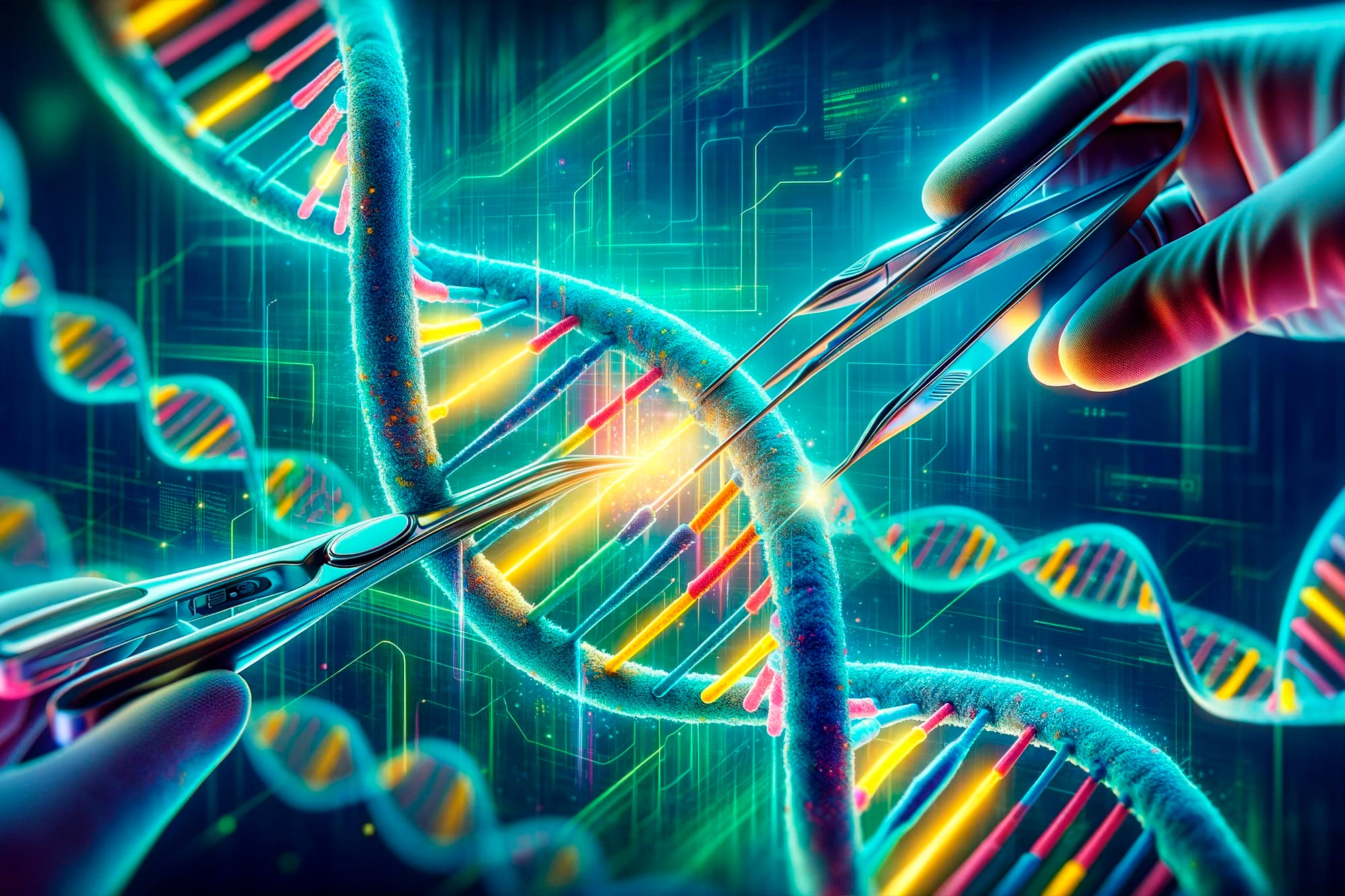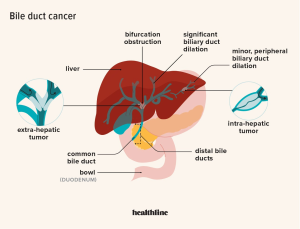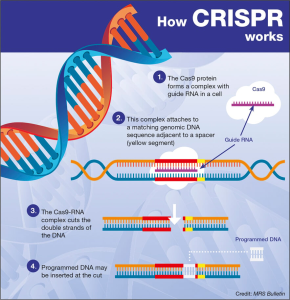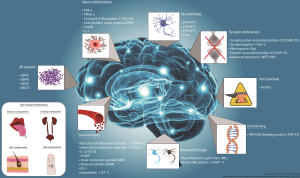
Gene editing breakthroughs are transforming the landscape of medicine and biology, offering revolutionary solutions to previously incurable genetic diseases. Among the most notable advancements, base editing and prime editing stand out, harnessing CRISPR technology to make precise alterations to DNA without the risks associated with traditional methods. These cutting-edge techniques empower scientists to correct harmful mutations at the molecular level, paving the way for innovative gene therapy approaches that could eradicate certain genetic disorders. With over 18 active clinical trials utilizing these groundbreaking methods, the potential to enhance health outcomes for millions has never been more promising. As researchers like David Liu push the boundaries of genetic science, the dream of rewriting genetic destiny becomes increasingly attainable.
Recent advancements in genetic modification are marking a new era in the fight against hereditary conditions, culminating in significant breakthroughs that are reshaping healthcare. Techniques such as base editing and prime editing are revolutionizing the field, allowing for meticulous corrections of deleterious genetic mutations with unprecedented accuracy. These innovations push beyond the capabilities of conventional genetics, opening doors to sophisticated gene therapies that address the root causes of genetic diseases. As scientists tap into the power of CRISPR technology, they are not only rewriting individual genetic destinies but are also laying the groundwork for a future where genetic disorders may become a thing of the past. The ongoing research and development in this area promise a new paradigm in medicine, underscoring the profound implications of genetic enhancement and treatment.
The Impact of Base Editing on Genetic Medicine
Base editing has emerged as a revolutionary technique in genetic medicine, allowing researchers to make precise edits at the level of individual DNA bases without causing double-strand breaks. This technology has opened new avenues in treating genetic diseases, representing a significant progression from previous methods like CRISPR technology. Base editing specifically targets the four nucleotides—adenine (A), cytosine (C), guanine (G), and thymine (T)—enabling scientists to convert one base into another with remarkable accuracy. This precision means that common mutations linked to genetic disorders can now be repaired more effectively, greatly enhancing the potential for successful gene therapy.
The implications of base editing are vast, particularly for patients afflicted by debilitating genetic conditions. For instance, in clinical trials, base editing has shown promise in addressing diseases such as sickle cell anemia and certain forms of muscular dystrophy, where a single base mutation can have disastrous effects. By transforming our approach to genetics, base editing not only offers hope to numerous patients but also emphasizes the importance of continued research in the field of genetic medicine.
Gene Editing Breakthroughs: Potential Towards Cures for Genetic Diseases
The realm of gene editing is rapidly evolving, with breakthroughs that hold potential for curing previously untreatable genetic diseases. Innovations like base editing and prime editing are at the forefront of this revolution, providing medical professionals with tools to address the underlying causes of these ailments. Unlike traditional CRISPR technology that cuts DNA, these new methods are designed for precision alterations, which is crucial for long-term remission and recovery for patients. By repairing faulty genes at the molecular level, researchers believe that these techniques could lead to cures that transform the lives of many.
Clinical trials utilizing these technologies are a testament to their potential; there are currently several ongoing studies treating a range of genetic disorders. Early results are encouraging, revealing that patients are experiencing significant improvements in their health conditions. As such advancements continue, there is growing optimism within the scientific community about the future of gene therapy and the feasibility of eradicating genetic diseases from human health.
The Role of Prime Editing in Genetic Research and Therapy
Prime editing is another game-changing technology that complements the existing gene-editing strategies. Dubbed ‘the Swiss Army knife of genetic engineering’, prime editing allows researchers to make edits to DNA with unprecedented versatility and precision. Unlike base editing, which can only change a base pair, prime editing can also insert, delete, or even replace sequences of DNA, making it a powerful tool for addressing a broader array of genetic disorders. This capability is particularly valuable in contexts where base editing alone may not suffice, thus expanding the potential for therapeutic applications across diverse genetic conditions.
Moreover, prime editing is designed to reduce off-target effects, which have long been a concern with traditional CRISPR methods. By limiting unintended consequences, prime editing enhances the safety and efficacy of gene therapies, thereby increasing patient trust and adoption of these innovative treatments. As researchers continue to refine prime editing techniques, the prospect of creating tailored therapies that effectively manage or cure genetic conditions becomes increasingly feasible.
The Future of Gene Therapy and Ethical Considerations
While the scientific strides in gene editing present incredible opportunities, they also raise important ethical questions that require careful deliberation. As we move towards a future where gene therapy could become mainstream, considerations around the implications of gene editing on human genetics must be addressed. Discussions regarding consent, accessibility, and the potential for designer genetics are critical for ensuring that the benefits of these groundbreaking therapies are equitably shared. The scientific community, along with policymakers, must strive to establish guidelines that foster responsible research and application of these technologies.
In addition, there is a profound responsibility to consider societal impacts, particularly on vulnerable populations who could be disproportionately affected by the commercialization of gene editing technologies. Safeguarding against potential abuses while promoting the ethical use of base and prime editing will be fundamental as we navigate the complex landscape of genetic technologies and their integration into healthcare.
Exploring Clinical Trials: Evidences of Genetic Breakthroughs
Clinical trials serve as a cornerstone for validating the effectiveness of novel gene-editing approaches. The ongoing trials using base and prime editing techniques represent a critical step in transitioning from laboratory research to real-world applications. By systematically assessing patient responses and long-term outcomes, researchers can gather the data necessary to fine-tune these interventions and understand their full impact on various genetic diseases.
To date, many participants in these trials have demonstrated encouraging results, often experiencing significant symptomatic relief or even remission of their conditions. The insights gained from these studies not only highlight the clinical potential of these new methods but also enhance our understanding of the broader implications of gene therapy. As we accumulate evidence of success, the scientific community is positioned to advocate for wider implementation of gene editing technologies in mainstream medical practices, ultimately striving to alleviate the burden of genetic diseases.
The Intersection of Basic Science and Advanced Gene Editing Technologies
At the heart of these gene editing breakthroughs lies the principle of basic science—an exploration of the natural world that often precedes technological advancements. The foundational work done by early researchers studying CRISPR has paved the way for the sophisticated editing strategies we see today, emphasizing the importance of curiosity-driven science in developing transformative solutions. It’s a poignant reminder of how curiosity and fundamental research can lead to extraordinary innovation that benefits society at large.
David Liu and his team exemplify this journey from basic science to impactful applications in gene therapy. Their work illustrates that the essence of scientific progress is often rooted in a deep understanding of natural systems and a relentless pursuit of knowledge. Looking to the future, it is vital to nurture a culture of inquiry and creativity within the scientific community to foster the next generation of breakthroughs in gene editing and beyond.
Frequently Asked Questions
What are the latest advances in gene editing breakthroughs using CRISPR technology?
Recent advances in gene editing breakthroughs with CRISPR technology have focused on enhancing precision and safety. Innovations like base editing and prime editing allow for targeted adjustments to the DNA, reducing unwanted mutations and improving efficiency in correcting genetic diseases.
How does base editing contribute to the field of gene editing breakthroughs?
Base editing is a significant advancement in gene editing breakthroughs, allowing scientists to convert one DNA base into another without cutting the DNA strand. This method addresses specific mutations that cause genetic diseases, making it a powerful tool for therapeutic applications and genetic research.
What role does prime editing play in recent gene editing breakthroughs?
Prime editing is heralded as a revolutionary method in gene editing breakthroughs that allows precise DNA repair. Unlike traditional CRISPR methods, prime editing can insert, delete, or replace DNA sequences at targeted locations, offering potential solutions for previously challenging genetic diseases.
Can gene therapy using CRISPR technology effectively treat genetic diseases?
Gene therapy utilizing CRISPR technology has shown promise in treating genetic diseases by correcting genetic mutations. Clinical trials have demonstrated the potential to eliminate symptoms in patients with disorders like sickle cell anemia and certain cancers, marking a new era in disease treatment.
What are the ethical considerations surrounding gene editing breakthroughs?
The rapid advancements in gene editing breakthroughs raise important ethical considerations, especially regarding safety and long-term implications. Discussions focus on the potential for germline editing, access to gene therapy, and the consequences of altering human DNA for future generations.
How is base editing being utilized in clinical settings for cancer treatment?
Base editing is being utilized in clinical settings for cancer treatment by directly targeting and correcting mutations in genes associated with tumor growth. This groundbreaking technique has already shown success in trials, offering new hope for patients with difficult-to-treat cancers.
What is the significance of David Liu’s work in the realm of gene editing breakthroughs?
David Liu’s work is significant in gene editing breakthroughs as he has developed innovative approaches like base editing and prime editing. His research not only enhances our ability to accurately edit genes but also opens new avenues for treating genetic diseases at their source, marking a crucial step forward in biotechnology.
Are there any risks associated with gene editing breakthroughs in genetic therapies?
Yes, there are risks associated with gene editing breakthroughs in genetic therapies, including off-target effects where unintended parts of the genome are altered. Ongoing research aims to refine these techniques to minimize risks while maximizing the potential benefits for patients.
What can we expect from the future of gene editing breakthroughs?
The future of gene editing breakthroughs is likely to involve enhanced technologies that offer even greater precision and efficiency. Innovations may lead to widely accessible gene therapies for genetic diseases, improved understanding of complex genetics, and potentially transformative applications in agriculture and medicine.
| Key Point | Description |
|---|---|
| Alyssa Tapley’s Treatment | Alyssa Tapley, at 13, was treated for T-cell leukemia using novel gene-editing technology, base editing, which ultimately saved her life. |
| David Liu’s Contributions | David Liu, a professor at Harvard, developed base editing and prime editing techniques for correcting genetic mutations. |
| Innovation Beyond CRISPR | Liu’s work advances beyond CRISPR to directly edit DNA without cutting the double helix, allowing for precise corrections. |
| Clinical Trials | There are currently at least 18 clinical trials utilizing base and prime editing, with positive early results in treating various diseases. |
| Basic Science’s Role | The essence of basic science, demonstrated through understanding CRISPR, has led to revolutionary advancements in gene editing. |
| Future Challenges | Liu expresses concerns regarding the partnership between higher education and the federal government affecting young scientists. |
Summary
Gene editing breakthroughs have revolutionized modern medicine by offering potential cures for genetic diseases. David Liu’s pioneering work on base and prime editing highlights how these advanced techniques provide safer and more precise methods for correcting mutations, leading to promising outcomes for patients like Alyssa Tapley. As these technologies continue to evolve through clinical trials, they demonstrate the profound impact basic science and innovative research can have on tackling global health challenges. However, it is essential to address the challenges faced by the scientific community to sustain these advancements and ensure their accessibility to those in need.



